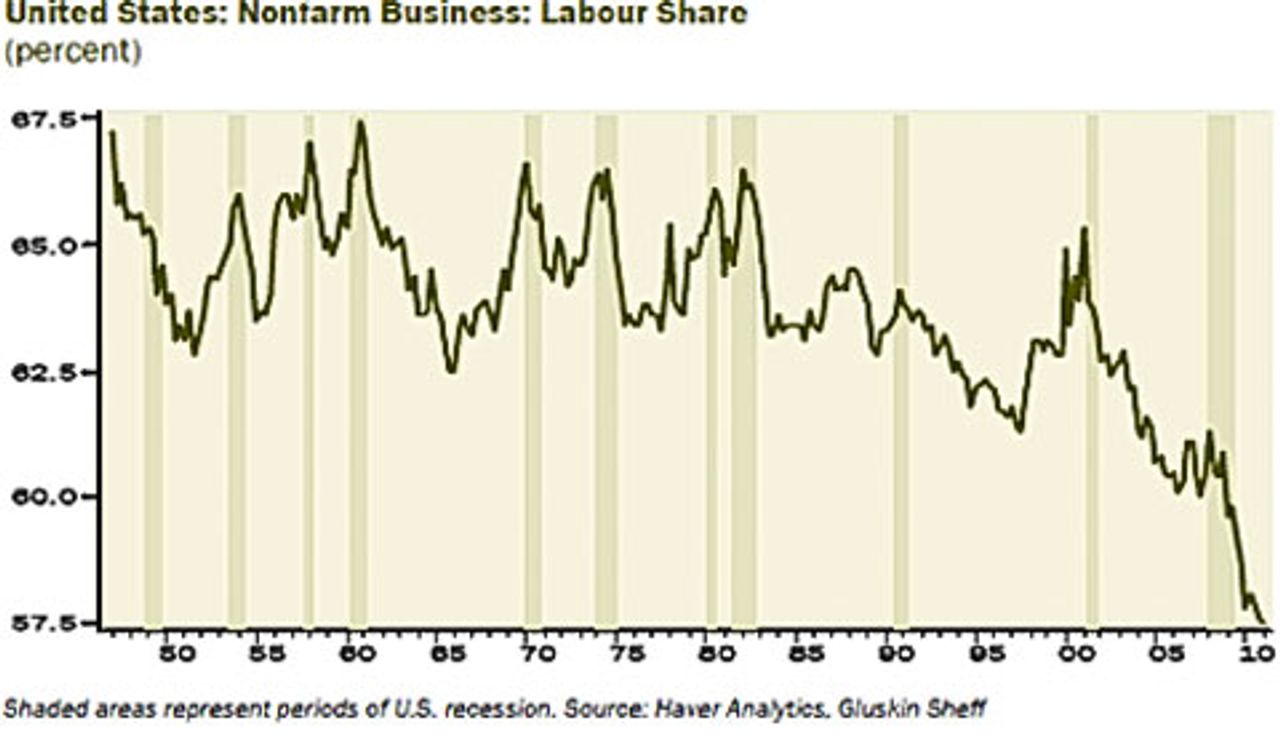 Locked-out Cooper Tire workers in Findlay, Ohio
Locked-out Cooper Tire workers in Findlay, OhioOn the picket lines in Findlay, Ohio, important political questions are emerging as Cooper Tire workers grapple with the issues posed by their nearly two-month struggle.
A question frequently put to reporters from the World Socialist Web Site by the workers, who are resisting the company’s wage-cutting demands, is: “How can the economy function if wages are driven so low that workers can no longer afford the commodities they produce?”
Workers approach this question very practically. The lowering of wages leads to falling demand and lower sales. Why would the corporations cut off their noses to spite their faces? It seems to defy common sense.
The first thing to be said is that the experience of the parents and grandparents of the Findlay workers, whereby a manufacturing worker, especially at a unionized company, could expect to earn a decent wage and have decent benefits, is by no means the historical norm in America. The ability of American industrial workers to have a reasonably secure and even comfortable existence was entirely the result of bitter, bloody and protracted struggles involving millions and spanning decades.
Without the struggles going back to the great railway strike of 1877 and culminating in the sit-down strikes of the 1930s and post-war strike wave, American workers would have remained in poverty. These struggles were, in turn, immeasurably strengthened by—and were an integral part of—the international struggles of the working class, above all the victory of the Russian working class in the 1917 socialist revolution.
The all-out offensive of American corporations today to put an end to decent wages and conditions in manufacturing is an intensification of a process that has been underway for more than three decades. It has been made possible by the treachery of the official trade unions, including the United Steelworkers, which long ago repudiated any form of class struggle and joined hands with the employers and the government to make the working class pay for the decline of US capitalism.
If the downward spiral of workers is to be stopped, they must revive the class struggle and socialist traditions that made the initial gains in wages and benefits possible in the first place.
It is ultimately the class struggle that determines workers’ wages. Under capitalism, profits are determined not by the amount of goods that are sold, but by the extraction of surplus value, or unpaid labor, from the working class. The proportion of surplus value that goes to the worker—in the form of wages and social benefits—and the proportion that goes to the capitalist—in the form of profits—is determined by the struggle between the two classes.
Nearly one hundred years ago, in 1914, Henry Ford decided to pay his workers $5 a day for eight hours of work in order to help create a mass market for the hundreds of thousands of cars rolling out of his factories.
Ford was a ruthless capitalist and enemy of the working class. But the early 20th century was the period of the ascendance of American capitalism, which was based on revolutionary methods of industrial production such as the assembly line. Ford was able to reduce the price of a car from the equivalent of a year’s wages for the average worker to four months. Even though profit per vehicle fell, Ford more than made up for this through the unprecedented number of cars he sold.
Still, conditions for most American industrial workers, including Ford workers, remained intolerable. Even as a rising world economic power, American capitalism never ceded anything to the working class without a ferocious struggle.
The unions, like the United Auto Workers and United Steelworkers, based themselves on the belief that the post-World War II economic boom would last forever. In 1958, UAW President Walter Reuther declared, “We reject Marxism and the class struggle—which is about dividing up scarcity. For the first time in history, we can divide abundance.”
What happened? The boom was grounded on the post-war reconstruction of the world economy under the auspices of American capitalism, which was producing half of the world’s products after World War II. By the 1960s and 1970s, however, declining profitability in manufacturing and rising competition from America’s European and Asian rivals led to a turn by the American ruling class away from industrial production and toward various forms of financial manipulation and speculation.
This turn to financial parasitism led to a series of asset bubbles and crises, culminating in the Wall Street crash of 2008 and the ensuing world recession.
Having rejected any struggle against the capitalist system, the UAW, the USW and the rest of the official unions decades ago abandoned even a nominal defense of the working class. Instead, from the nationalist standpoint of making US corporations “more competitive,” they suppressed all resistance and collaborated in the attack on jobs, wages and working conditions.
Today, employee pay constitutes the smallest share of the economy since the government began collecting wage and salary data in 1929, while corporate profits account for the largest share since 1929.
Obama’s vision for the revival of US industry is predicated on dramatically narrowing the wage gap between American workers and their brutally exploited counterparts in China and other low-wage countries.

This reduction in wages is fully backed by the UAW, the USW and other unions, which are praising corporations for “in-sourcing,” i.e., shifting production back to the US to take advantage of the poverty-level wages the unions enforce. In this way, the union officials hope to restore their depleted dues base and shore up their finances.
It must also be remembered that corporations are selling their products to the world market, not just America. If they can drive down wages, they can still make large profits even if the US market is contracting. Last year, General Motors, for example, sold as many cars in China (2.5 million) as it did in the US, even though only 37 out of every 1,000 people in China own a car.
Of course, driving down the ability of broad masses of people to buy goods creates problems for the capitalists. But a shrinking domestic market only intensifies the competition between rival capitalists to increase the exploitation of their workers.
The capitalist system did not arise out of a rational and conscious plan. It arose historically. The basic contradictions of the system—between the social character of production and private ownership of the means of production and between the global integration of the economy and the nation-state system—create problems that find expression in glutted markets, overcapacity and ultimately trade conflicts and war.
If a return to conditions of dire poverty is to be prevented, workers will have to revive the great traditions of class struggle and socialism of the American working class, as part of a united struggle by the international working class against this failed economic system.
The unions, tied as they are to the profit system and economic nationalism, are worse than useless in this struggle. They stand on the other side. New organizations of industrial and political struggle are needed.
Economic life can be reorganized on a rational, scientific and egalitarian basis only when the working class organizes itself as an independent political force to take political power into its own hands. Only in this manner can workers exert democratic control over the allocation and distribution of the wealth they create. This is the fight for socialism.
